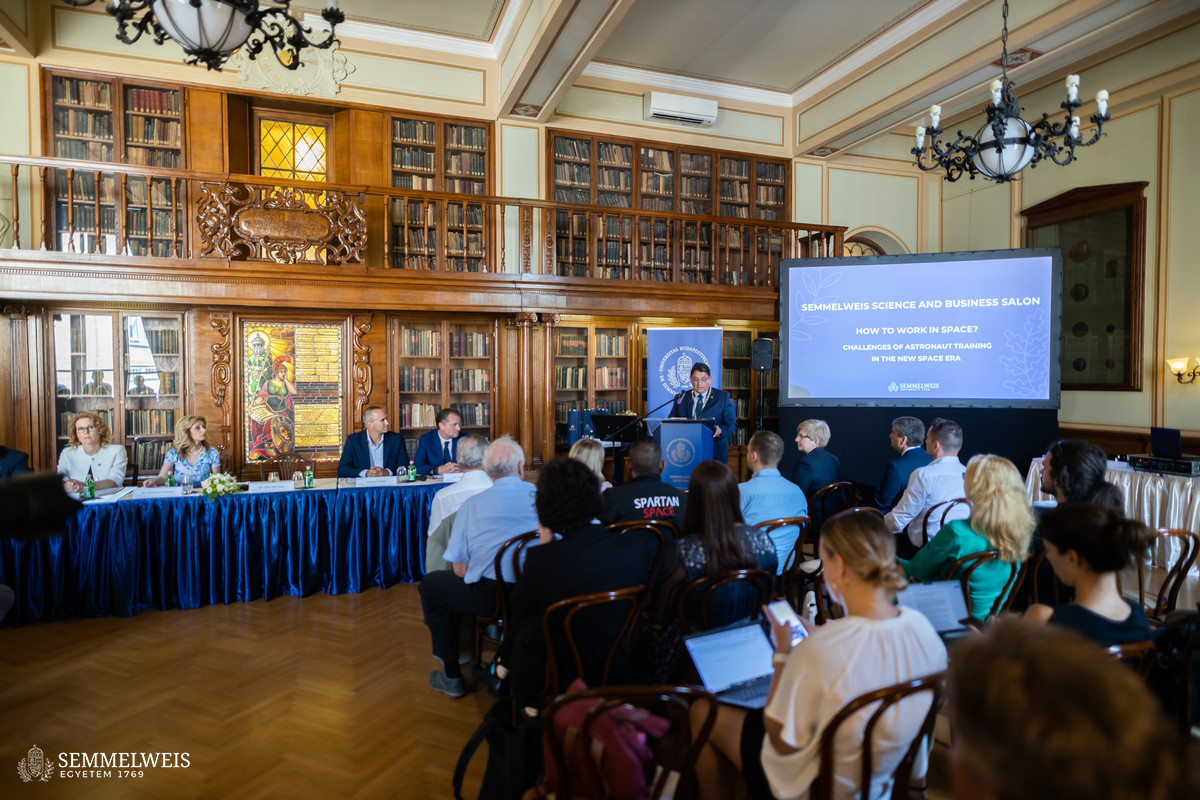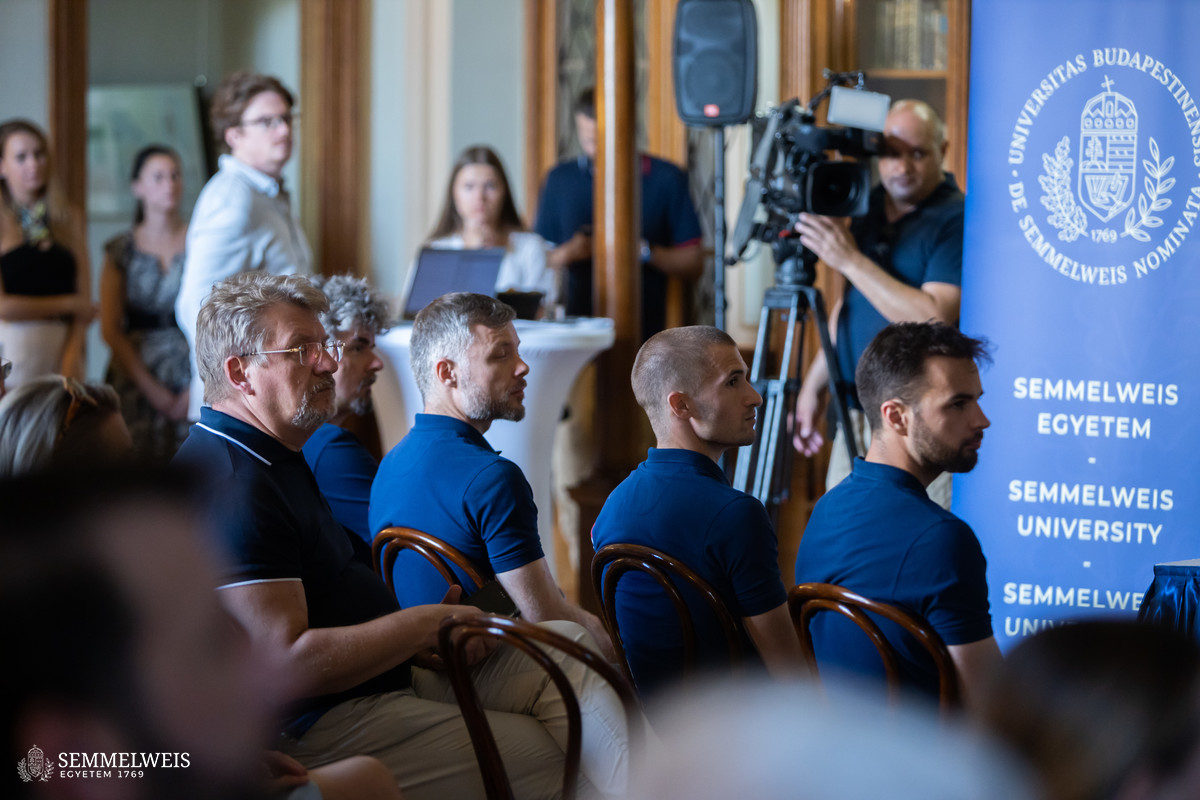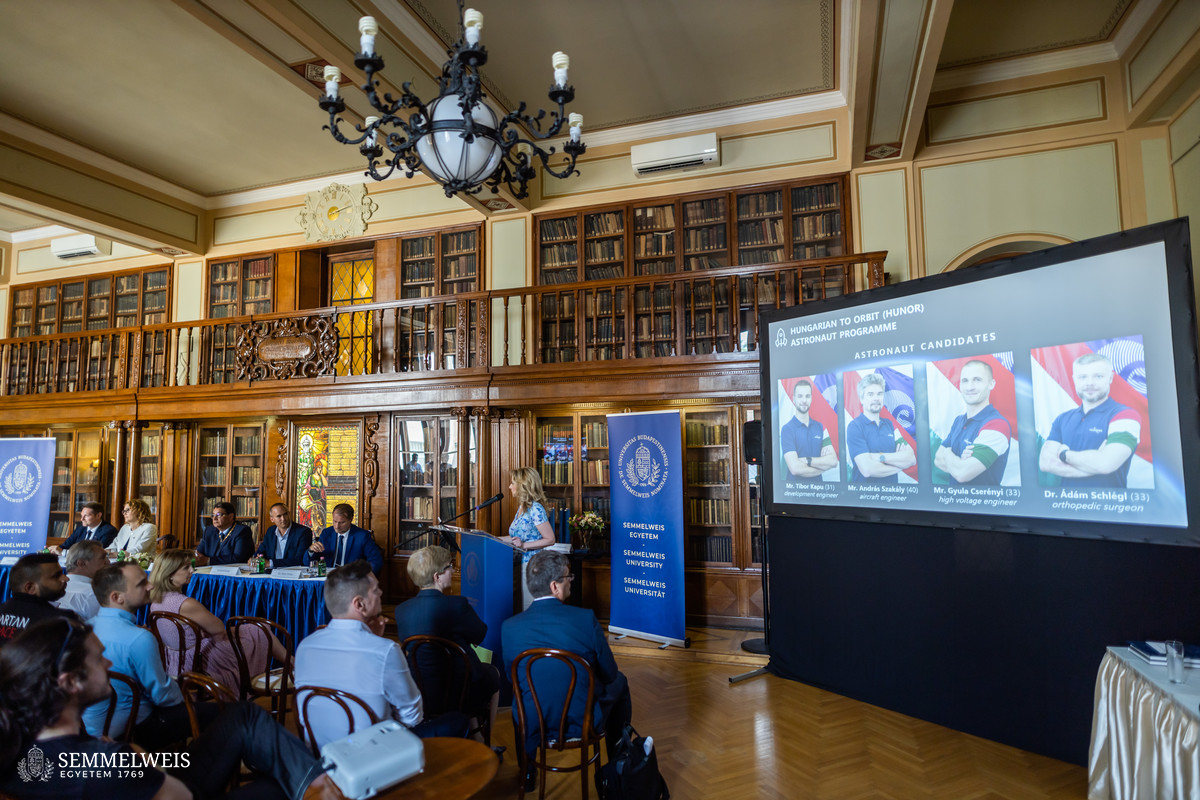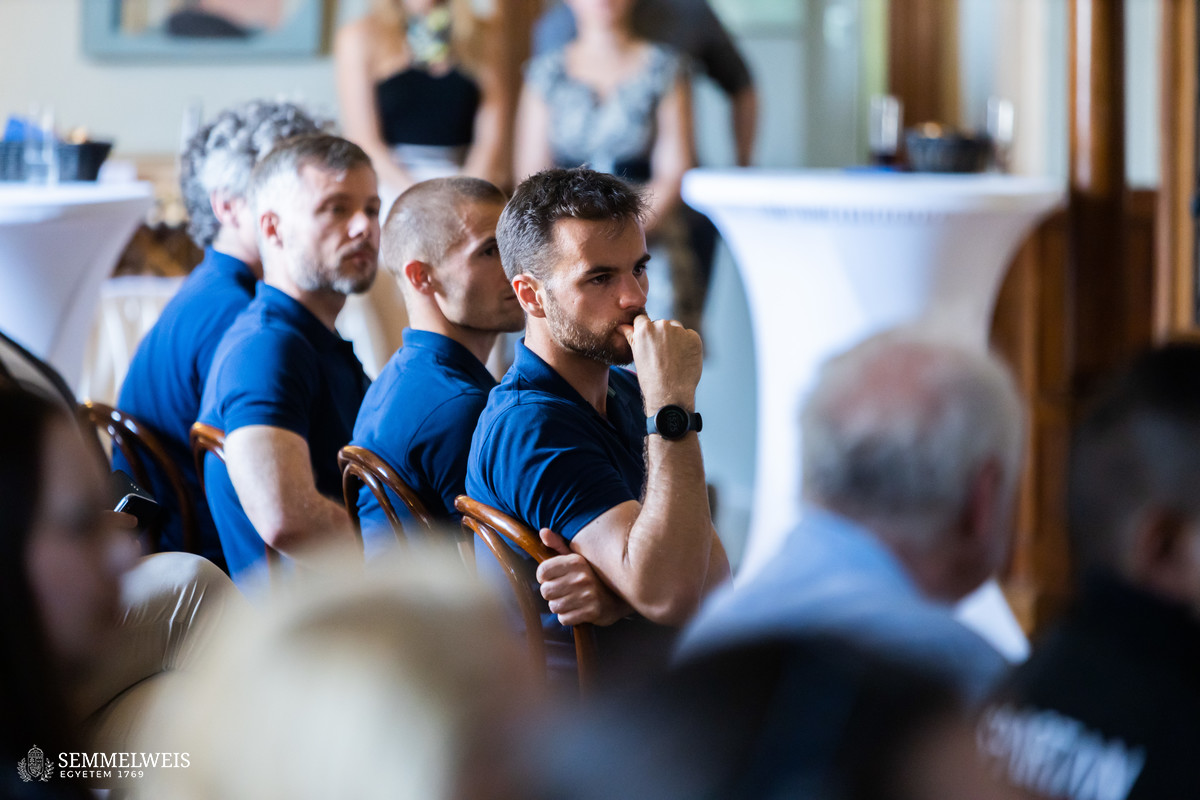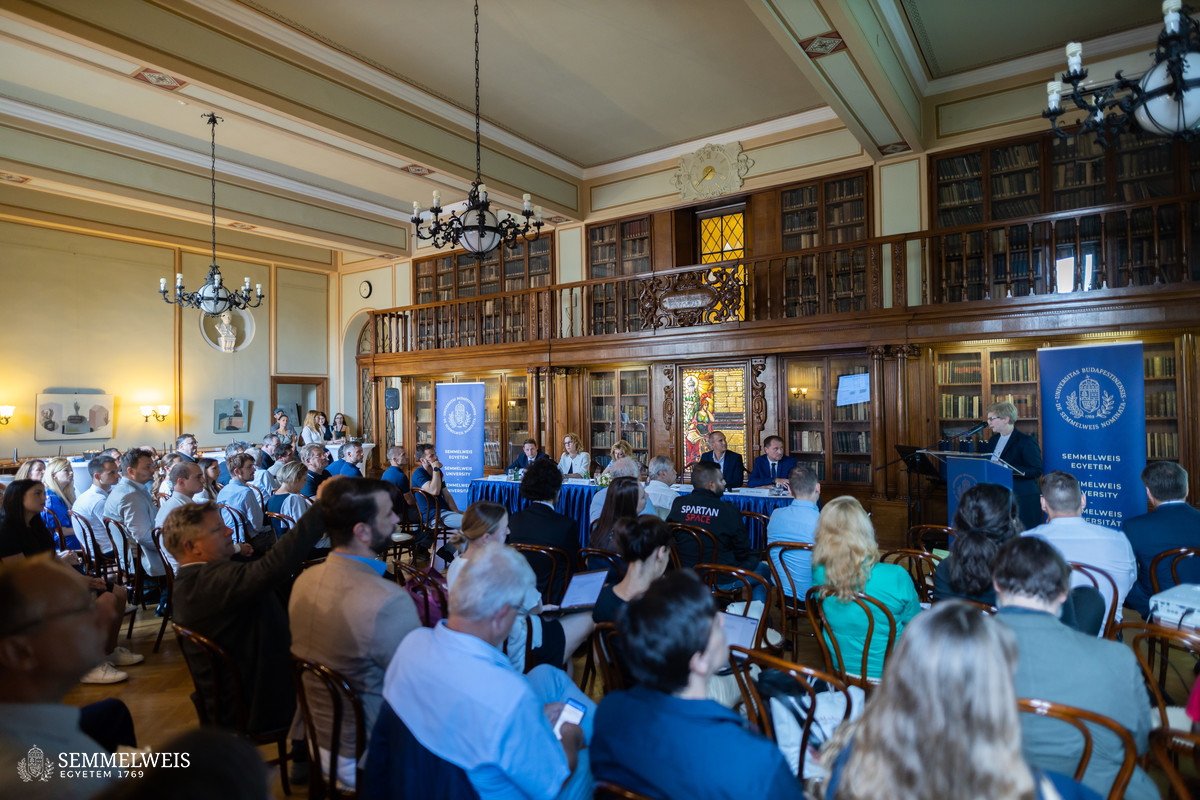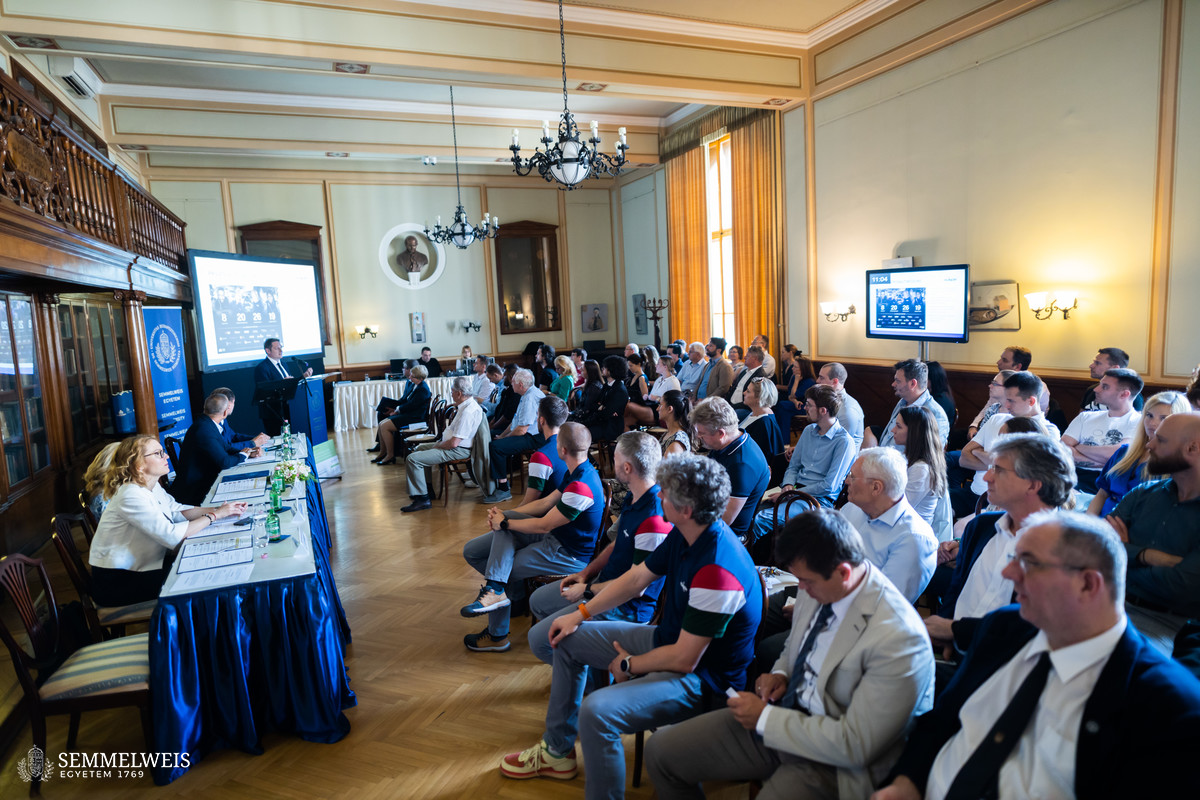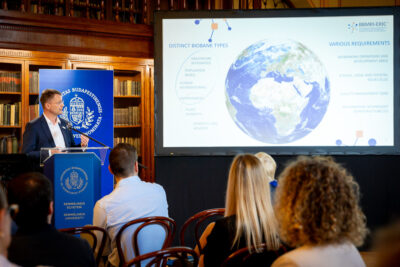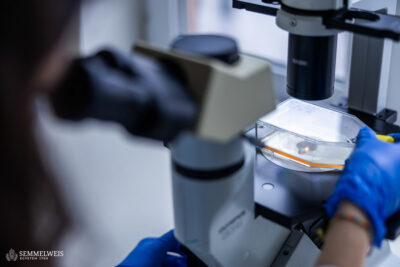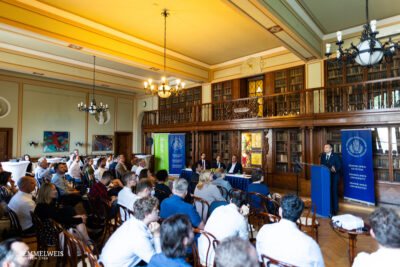Semmelweis University participates in the Selection and Training Sub-Program as the health and research background institution of the Hungarian Astronaut Program called HUNOR, and leads – develops, coordinates and operates – the medical-health telemetry part of the Research Sub-Program. The university is developing a complex telemetry system to monitor the health parameters of the astronauts, which will transmit physiological data on the condition of the Hungarian astronaut from the International Space Station.
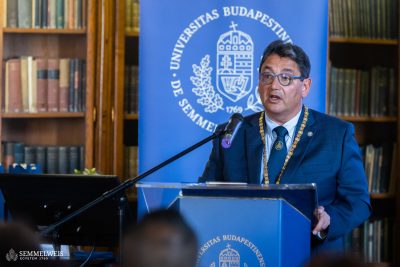 At Monday’s conference, the rector of Semmelweis University said: the university’s more than 250-year history, development and outstanding results are the guarantee that the institution can provide the highest-level medical background necessary to select astronaut candidates and support their preparation.
At Monday’s conference, the rector of Semmelweis University said: the university’s more than 250-year history, development and outstanding results are the guarantee that the institution can provide the highest-level medical background necessary to select astronaut candidates and support their preparation.
“The work in our Department of Sports Medicine, as well as the university’s role in many major sports events, shows that we have significant experience in the field of sports medicine, and our Department of Aviation and Space Medicine provides the specialized expertise that is useful in one of the newest branches, space medicine,” said Dr. Béla Merkely. The rector’s deputy in the medical management of the HUNOR Program, Dr. Klaudia Vivien Nagy, Assistant Professor at the Városmajor Heart and Vascular Centre, who is receiving a special training in space medicine organized by the European Space Agency (ESA). After the completion of this course, she will personally serve as the official physician of the Hungarian astronaut, who will be under medical supervision for the entire duration of space travel. “Astronauts have to survive in a unique and challenging environment during their mission. This requires outstanding performance from us as well,” the rector added.
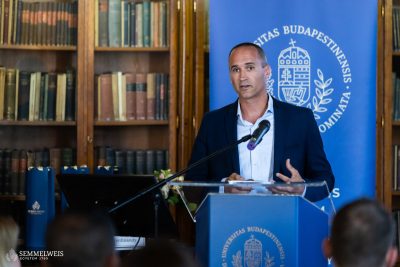 Arnaud Runge, medical engineer of the ESA, gave an insight into the details of medical supervision for the health of astronauts. As he said, the ESA’s mission is to provide the best scientific background and clinical care for space exploration, while expanding the use of space technology in new markets and user communities to boost the industry and create jobs. He noted that many medical challenges in space can hinder a mission, such as isolation, communication problems, lack of evacuation options, limited resources, radiation, accidents, injuries and unforeseen hazards. They must be prepared for all of these, which is why ESA focuses its resources primarily on prevention and early detection, for example with risk maps and the development of diagnostic tools. Arnaud Runge also emphasized that the concept of ESA Exploration Medical Care is exploration-focused and there is a dual medical and scientific application. In other words, their goal is to promote the commercial and business use of new technologies in order to strengthen the competitiveness of European industry on the global space markets.
Arnaud Runge, medical engineer of the ESA, gave an insight into the details of medical supervision for the health of astronauts. As he said, the ESA’s mission is to provide the best scientific background and clinical care for space exploration, while expanding the use of space technology in new markets and user communities to boost the industry and create jobs. He noted that many medical challenges in space can hinder a mission, such as isolation, communication problems, lack of evacuation options, limited resources, radiation, accidents, injuries and unforeseen hazards. They must be prepared for all of these, which is why ESA focuses its resources primarily on prevention and early detection, for example with risk maps and the development of diagnostic tools. Arnaud Runge also emphasized that the concept of ESA Exploration Medical Care is exploration-focused and there is a dual medical and scientific application. In other words, their goal is to promote the commercial and business use of new technologies in order to strengthen the competitiveness of European industry on the global space markets.
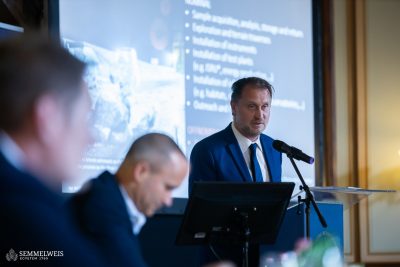 Peter Weiss, the President and Founder of Spartan Space, informed the audience about analogue locations and training for future space missions. The company primarily provides access to space simulation facilities imitating extreme environments, such as a vacuum chamber called “Dusty” in Luxembourg for practicing lunar surface exploration. Peter Weiss briefly outlined the stages of NASA’s ARTEMIS mission, which aims to have a sustainable presence on the Moon in preparation for Mars missions, and also discussed the challenges arising in connection with the discovery of the lunar Southpole. Competence development covers activities such as sample acquisition, analysis, storage and return, as well as the installation of various instruments and infrastructure such as power generation units and radiation shields. The head of Spartan Space specifically touched on the importance of analogue sites, whether natural or artificial, and, according to him, the most important thing is to imitate the live situation by allowing to simulate a specific state in space for the purpose of testing a geological project or the lunar evacuation system. Peter Weiss went on to say that Hungary also has diverse and promising analogue locations, the cataloging and on-site clarifying of which is taking place within the framework of a project led by Semmelweis University and financed by the ESA.
Peter Weiss, the President and Founder of Spartan Space, informed the audience about analogue locations and training for future space missions. The company primarily provides access to space simulation facilities imitating extreme environments, such as a vacuum chamber called “Dusty” in Luxembourg for practicing lunar surface exploration. Peter Weiss briefly outlined the stages of NASA’s ARTEMIS mission, which aims to have a sustainable presence on the Moon in preparation for Mars missions, and also discussed the challenges arising in connection with the discovery of the lunar Southpole. Competence development covers activities such as sample acquisition, analysis, storage and return, as well as the installation of various instruments and infrastructure such as power generation units and radiation shields. The head of Spartan Space specifically touched on the importance of analogue sites, whether natural or artificial, and, according to him, the most important thing is to imitate the live situation by allowing to simulate a specific state in space for the purpose of testing a geological project or the lunar evacuation system. Peter Weiss went on to say that Hungary also has diverse and promising analogue locations, the cataloging and on-site clarifying of which is taking place within the framework of a project led by Semmelweis University and financed by the ESA.
The inspiring nature of space research is attractive to many young people, and as a result, this year three PhD students will start their research in this topic, said Dr. Péter Ferdinandy, the university’s Vice-Rector for Science and Innovations, emphasizing that research carried out in space conditions can also be used in life on Earth.
The university’s participation in space-themed projects has enabled fast-paced, targeted ecosystem development, i.e. a network of several partner companies, research institutes, space agencies, and funding entities has been formed over the past two years, according to Dr. Renáta Papp, Director responsible for business development of the RDI.
Following the pre-selection of more than 240 applicants, in the summer of 2022, Semmelweis University chose the best 8 astronaut candidates from among 25 people, for which the institution developed a protocol incorporating the guidelines of the ESA and the American National Aeronautics and Space Administration (NASA). As part of this, ophthalmology, dentistry, ear-nose-throat, cardiology, psychological-psychiatry, and gastroenterology examinations were carried out at the institution’s clinics. The microgravity environment also puts a healthy organism to the test due to the fact that the fluid spaces in space are rearranged, therefore, for example, astronauts’ faces swell, moreover, the sense of balance, the functioning of the intestinal and the immune systems change, and bone and muscle tissue breaks down. Based on the medical examinations carried out at Semmelweis University, the astronaut candidates who met the requirements received the “passed” qualification of the ESA Medical Committee.
In the third phase of the selection process, the university’s psychiatrists and psychologists performed a detailed psychological analysis, assessed the candidates’ technical and scientific skills, and the applicants received training in telemedicine and resuscitation at the Városmajor Heart and Vascular Centre. In the end, 4 astronaut candidates remained in the running. Semmelweis University took an active part in the evaluation of their results and in setting up the final order, and this year they started training the selected ones according to international standards.
Currently, the 4 astronaut candidates’ (Gyula Cserényi, Tibor Kapu, dr. Ádám Schlégl and András Szakály) physical training is taking place, the aim of which is to improve cardiovascular endurance, muscle strength and neuromuscular coordination. As part of this, the candidates perform special physical training along with following a personalized diet. In the meantime, they take part in periodic health status assessments, physical, biomechanical, and psychological tests, and their spiritual support and the development of their psychological abilities are also continuous.
Directorate of Communication
Translation: Mária Sánta
Photo: Bálint Barta – Semmelweis University
